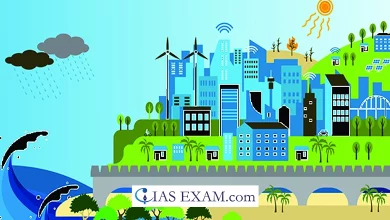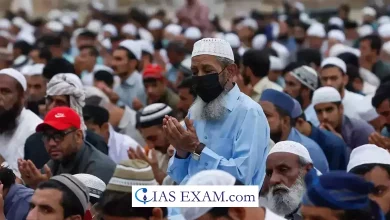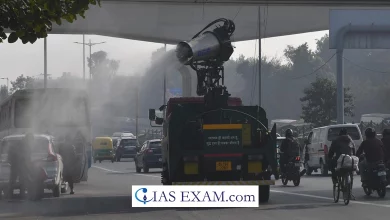
Context- According to the National Statistical Office (NSO), India’s GDP growth slowed to 4.4% between October and December 2022 from 6.3% in the second quarter (Q2) of 2022-23. The NSO maintained its full-year growth estimate for the economy at 7% despite revising 2021-22 GDP growth to 9.1% from 8.7%.
Key Highlights
- The NSO also revised the numbers for growth contraction in the COVID-hit year of 2020-21. According to the Second Revised Estimates, the overall impact on the economy in that year was -5.7%, significantly less than its first provisional estimate of -7.3%.
- The economy’s Gross Value Added (GVA) grew by 4.6% in the third quarter of 2022-23, down from 5.5% in the second quarter. Manufacturing continued to shrink in the second quarter, but at a slower rate of 1.1%, compared to 3.6% in the second quarter.
- The persistent slack in the manufacturing sector, which resulted in Q3 growth levels that were lower than their projections, was called a negative surprise by economists.
- However, the print for GDP growth of 4.4 percent also reflects revisions made to previous years when the base was raised.
- Recognizing the math, the annual growth rate will be around 6.8% even if the 4.4% growth rate of Q3 continues into the January to March period (Q4).
- The second advance estimates for 2022-23 have maintained the overall annual growth rate of 7%, but they have increased the external sector’s contribution to this growth, which is offset by a decrease in domestic demand components, particularly private and government consumption expenditures. As a result, it appears that domestic demand has decreased in comparison to the earlier estimate.
- GVA has increased by 7.2% over the first nine months of 2022-23, compared to 10.7% over the same time period in 2021-22. GDP is estimated to have increased by 7.7% over the same period in 2021-2022, from April to December.
Sectoral dichotomies and significant revisions
- Following the data revisions of the previous two years, Mr. Srivastava stated that the cumulative average real GDP growth rate from 2019-20 to 2022-2023 will be 3.2%. Covid has resulted in a decrease of nearly 4% points over the potential growth of 7% over the long term, he said.
- Overall GVA growth in the first quarter has been revised lower from the earlier estimate of 12.7% to 12.1%, and the Q2 GVA increase has been slightly reduced from the earlier estimate of 5.6% to 5.5%. The initial estimate of 13.5% GDP growth for the first quarter of 2022-23 has been revised down to 13.2%, but the Q2 growth estimates have not changed.
- The NSO’s earlier estimates of a contraction of 4.3% and 2.8% in the mining and manufacturing GVA for the second quarter have been revised upward.
- On the other hand, agriculture GVA growth has been markedly downgraded for both the first and second quarters. In the first and second quarters, GVA growth estimates of 4.5 percent and 4.6 percent have been reduced to 2.4 percent and 2.4 percent, respectively.
- The revisions allowed mining and quarrying GVA to rebound from a contraction of 0.4 percent in the second quarter to grow 3.7% in the third, while agriculture, forestry, and fishing GVA grew at the fastest rate this year, reaching 3.7%.
- Electricity, gas, water supply, and other utility services saw GVA growth accelerate to 8.2% in Q3 from 6% in Q2 (revised lower from earlier estimate of 6.6%), as did construction GVA growth.
- However, the contact-intensive Trade, Hotels, Transport, Communication, and Services Related to Broadcasting sectors all recorded lower GVA growth in Q3 than in Q2, which contributed to the drag on overall growth. These sectors grew at 9.7% compared to 15.6% in Q2.
- In Q3, which included the holiday season, the share of private consumption expenditure in GDP rose to the highest level this year, at 61.6%, but it was lower than the 63% share in the same quarter a year earlier.
- The data from the third quarter suggest that the Reserve Bank of India should hold off on raising the benchmark policy interest rate because high borrowing costs have an impact on industries like automobiles, housing, and high-end consumer durables.
- Financial, Real Estate, and Professional Services saw GVA growth slow from 7.1% in Q2 to 5.8% in Q3, while Public Administration, Defense, and Other Services saw GVA growth slow from 5.6% in Q2 to just 2% in Q3.
National Statistical Office (NSO)
|





.png)



